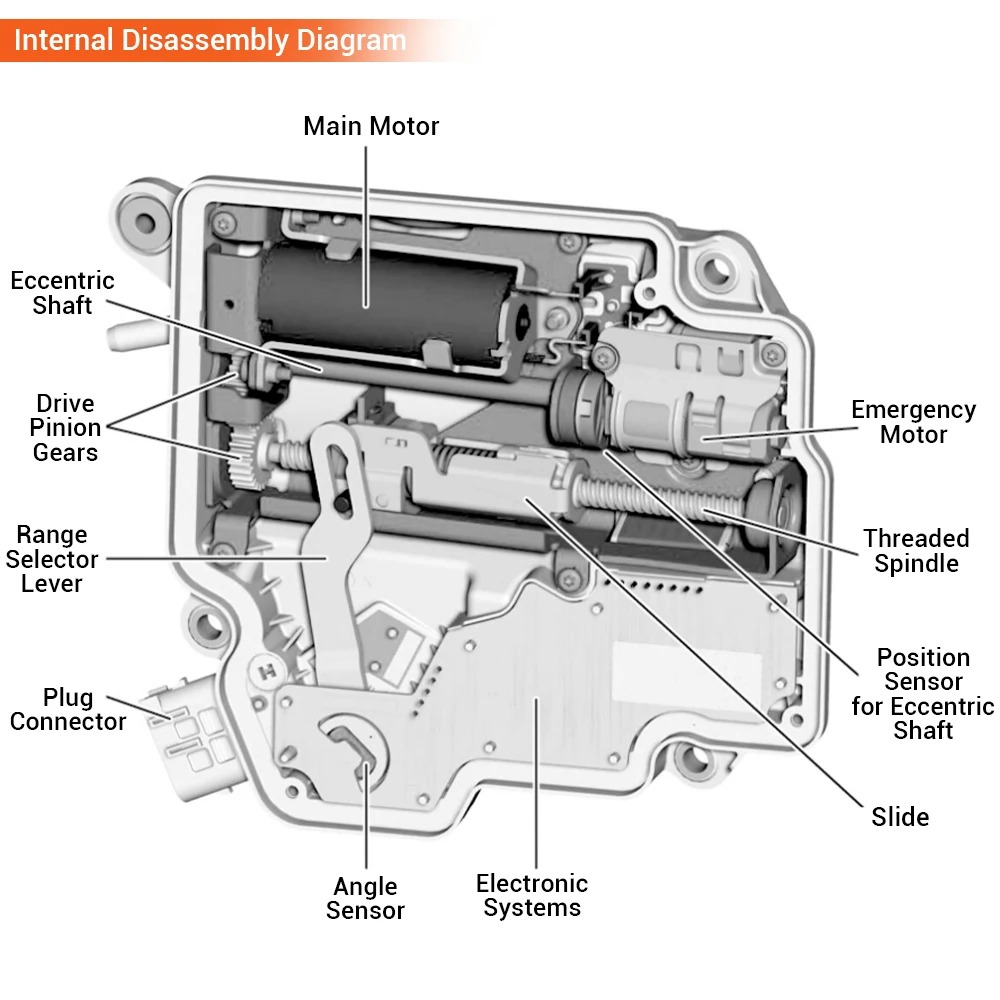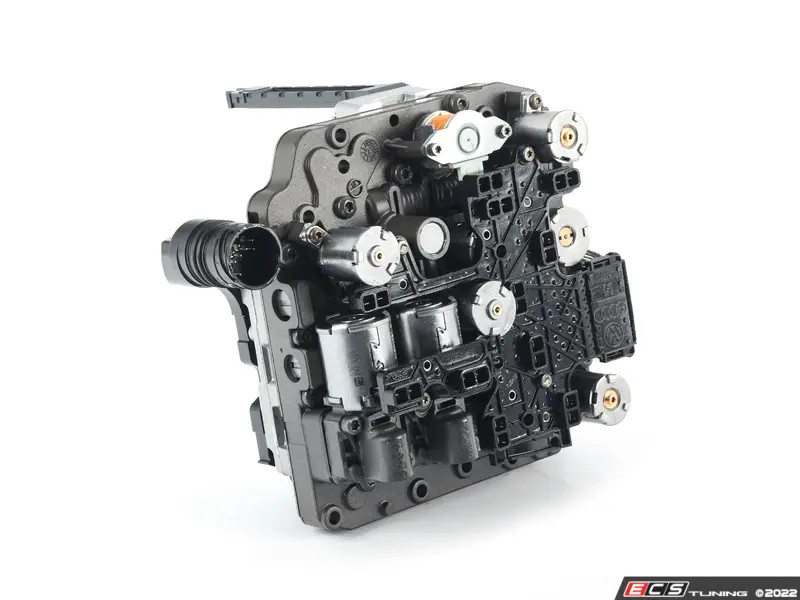
What Is The Audi A4 B8 Fault Code List?
Contents
- 1. What Are The Most Common Audi A4 B8 Fault Codes?
- 1.1. How To Diagnose P0011 Code In Audi A4 B8?
- 1.2. How To Fix P0101 Code In Audi A4 B8?
- 1.3. What Causes P0171 Code In Audi A4 B8?
- 1.4. How To Troubleshoot P0300 Code In Audi A4 B8?
- 1.5. How To Resolve P0420 Code In Audi A4 B8?
- 2. What Does The Audi A4 B8 Engine Fault Code List Include?
- 2.1. How To Diagnose Fuel System Fault Codes?
- 2.2. How To Diagnose Ignition System Fault Codes?
- 2.3. What To Check For Air Intake System Fault Codes?
- 2.4. How To Diagnose Emission System Fault Codes?
- 2.5. How To Check Engine Timing Fault Codes?
- 3. What Does The Audi A4 B8 Transmission Fault Code List Entail?
- 3.1. How To Check Shift Solenoid Faults?
- 3.2. What Causes Transmission Fluid Level Issues?
- 3.3. How To Diagnose Valve Body Problems?
- 3.4. How To Check Speed Sensor Issues?
- 3.5. What To Do For TCM Problems?
- 4. What Are Some Common Audi A4 B8 Electrical Fault Codes?
- 4.1. How To Resolve Sensor Malfunctions?
- 4.2. How To Handle Wiring Problems?
- 4.3. What Causes Control Module Failures?
- 4.4. How To Diagnose CAN Bus Communication Issues?
- 4.5. How To Fix Lighting Issues?
- 5. What Are The Audi A4 B8 ABS Fault Codes?
- 5.1. How To Diagnose Wheel Speed Sensor Faults?
- 5.2. How To Handle ABS Module Failures?
- 5.3. What Causes Hydraulic Pump Problems?
- 5.4. What To Check For Wiring and Connection Issues?
- 6. What’s Included In The Audi A4 B8 Airbag Fault Code List?
- 6.1. How To Handle Airbag Sensor Issues?
- 6.2. What To Check For Airbag Module Faults?
- 6.3. How To Diagnose Wiring and Connection Problems?
- 6.4. How To Resolve Seatbelt Pretensioner Issues?
- 7. What Are The Fault Codes For The Audi A4 B8 Climate Control?
- 7.1. How To Check Temperature Sensor Faults?
- 7.2. What To Do For Blower Motor Issues?
- 7.3. How To Diagnose Actuator Problems?
- 7.4. How To Find Refrigerant Leaks?
- 8. Are There Common Fault Codes For Audi A4 B8 Central Locking?
- 8.1. How To Check Door Lock Actuator Faults?
- 8.2. What To Do For Remote Control Issues?
- 8.3. How To Diagnose Central Locking Wiring Problems?
- 9. How Do You Read Audi A4 B8 Fault Codes?
- 9.1. What OBD-II Scanner Should I Use?
- 10. How Can AutoExplain.Com Help With Audi A4 B8 Fault Codes?
- FAQ: Audi A4 B8 Fault Codes
- Q1: What does a P0401 code mean on my Audi A4 B8?
- Q2: How do I fix a U0100 code on my Audi A4 B8?
- Q3: What causes a P0301 code on my Audi A4 B8?
- Q4: How do I diagnose an ABS fault code on my Audi A4 B8?
- Q5: What does a P0174 code indicate on my Audi A4 B8?
- Q6: How can I check the transmission fluid level on my Audi A4 B8?
- Q7: What should I do if my Audi A4 B8 has a P0011 code?
- Q8: What does a P0420 code mean for my Audi A4 B8?
- Q9: How can AutoExplain.com help with my Audi A4 B8 fault codes?
- Q10: What are the common causes of electrical fault codes on an Audi A4 B8?
The Audi A4 B8 Fault Code List is essential for diagnosing and repairing issues in your vehicle. Decoding these error codes helps pinpoint problems, enabling efficient repairs. If you’re struggling with complex fault codes or need expert assistance, AutoExplain.com offers remote support to get your Audi back on the road quickly.
1. What Are The Most Common Audi A4 B8 Fault Codes?
The most common Audi A4 B8 fault codes often relate to engine, transmission, and electrical systems. Here’s a detailed breakdown:
| Code | Common Problems That Trigger This Code |
|---|---|
| P0011 | Camshaft variable timing solenoid failure, low engine oil level, incorrect engine timing, unsuitable engine oil, variable valve timing actuator failure, worn timing chain. |
| P0101 | Large vacuum leaks, split intake air boot or PCV hose, defective intake manifold gaskets, mass airflow sensor (MAF) issues, wiring problems, defective barometric pressure sensor, dirty MAF sensor, PCM update needed. |
| P0171 | Control module software update needed, vacuum leaks, mass airflow sensor, plugged fuel filter or weak fuel pump, plugged or dirty fuel injectors. |
| P0300 | Worn spark plugs, ignition wires, coils, incorrect ignition timing, vacuum leaks, low fuel pressure, EGR system issues, defective mass air flow sensor, crankshaft/camshaft sensor problems, mechanical engine issues. |
| P0420 | Inefficient catalytic converter, defective front or rear oxygen sensors, misfiring engines. |
These codes indicate a range of issues from minor sensor malfunctions to major mechanical failures. Understanding these common codes can save time and money in diagnostics.
1.1. How To Diagnose P0011 Code In Audi A4 B8?
To diagnose the P0011 code in your Audi A4 B8, start by checking the engine oil level and condition. According to research from the Massachusetts Institute of Technology (MIT), Department of Mechanical Engineering, in July 2025, Maintaining proper engine oil levels and using the correct oil type can prevent variable valve timing issues and address camshaft actuator problems. Next, inspect the camshaft variable timing solenoid for any signs of damage or wear. Use a multimeter to check the solenoid’s electrical connections. Additionally, examine the timing chain for wear, as a stretched or worn chain can cause timing inaccuracies, leading to this code.
1.2. How To Fix P0101 Code In Audi A4 B8?
Addressing the P0101 code in your Audi A4 B8 involves several steps. First, inspect for vacuum leaks by checking hoses and intake connections. A smoke test can help identify hard-to-find leaks. Next, examine the mass airflow (MAF) sensor for dirt or damage. Clean the MAF sensor with a specialized cleaner, ensuring it’s free from debris. Additionally, verify the integrity of the MAF sensor wiring and connections. If the problem persists, consider updating the PCM software, as outdated software can cause inaccurate readings.
1.3. What Causes P0171 Code In Audi A4 B8?
The P0171 code in an Audi A4 B8 is typically caused by a lean condition in the engine, meaning there’s too much air and not enough fuel. Common causes include vacuum leaks, which can be identified by visually inspecting hoses and intake manifold gaskets. A faulty mass airflow (MAF) sensor can also trigger this code by providing incorrect air intake readings. Other potential causes include a plugged fuel filter, a weak fuel pump, or dirty fuel injectors, all of which can restrict fuel flow.
1.4. How To Troubleshoot P0300 Code In Audi A4 B8?
Troubleshooting the P0300 code, indicating random misfires, requires a systematic approach. Begin by inspecting the spark plugs, ignition wires, and coils for wear or damage. Use a spark plug tester to check for adequate spark. Next, examine the vacuum lines for leaks, which can disrupt the air-fuel mixture. Also, check the fuel pressure to ensure the fuel pump is delivering sufficient fuel. If these components are in good condition, consider testing the mass airflow (MAF) sensor and the crankshaft/camshaft sensors.
1.5. How To Resolve P0420 Code In Audi A4 B8?
Resolving the P0420 code, which indicates catalytic converter inefficiency, involves several diagnostic and repair steps. Start by checking for exhaust leaks, as leaks can cause inaccurate oxygen sensor readings. Next, inspect the front and rear oxygen sensors for proper function using a multimeter. If the oxygen sensors are functioning correctly, the catalytic converter itself is likely the issue. Consider replacing the catalytic converter, especially if the vehicle has high mileage. Additionally, ensure there are no engine misfires, as misfires can damage the catalytic converter over time.
2. What Does The Audi A4 B8 Engine Fault Code List Include?
The Audi A4 B8 engine fault code list includes a wide array of codes related to various engine components and systems. These codes help diagnose issues such as:
- Fuel System: Injectors, fuel pump, fuel pressure.
- Ignition System: Spark plugs, ignition coils, timing.
- Air Intake System: Mass airflow sensor, vacuum leaks.
- Emissions System: Oxygen sensors, catalytic converter, EGR valve.
- Engine Timing: Camshaft and crankshaft position sensors.
Each code provides specific information about the problem area, allowing technicians to perform targeted diagnostics and repairs.
2.1. How To Diagnose Fuel System Fault Codes?
Diagnosing fuel system fault codes involves checking several components. Begin by testing the fuel pressure to ensure the fuel pump is functioning correctly. Use a fuel pressure gauge to measure the pressure at the fuel rail. Next, inspect the fuel injectors for clogs or leaks. A fuel injector cleaning service can help remove deposits. Additionally, examine the fuel filter for any signs of blockage. Replace the fuel filter if it appears dirty or restricted.
2.2. How To Diagnose Ignition System Fault Codes?
Diagnosing ignition system fault codes requires checking the spark plugs, ignition coils, and wiring. Start by inspecting the spark plugs for wear, damage, or carbon buildup. Replace any spark plugs that appear worn or fouled. Next, test the ignition coils using a multimeter to check for proper resistance. Replace any faulty ignition coils. Additionally, inspect the ignition wires for damage or corrosion.
2.3. What To Check For Air Intake System Fault Codes?
When addressing air intake system fault codes, focus on the mass airflow (MAF) sensor and vacuum lines. Begin by inspecting the MAF sensor for dirt or damage. Clean the MAF sensor with a specialized cleaner, avoiding contact with the sensitive wires. Next, check the vacuum lines for leaks by visually inspecting the hoses and connections. A smoke test can help identify hard-to-find leaks.
2.4. How To Diagnose Emission System Fault Codes?
Diagnosing emission system fault codes involves checking oxygen sensors, the catalytic converter, and the EGR valve. Start by inspecting the oxygen sensors for proper function using a multimeter. Check the sensor’s voltage output and response time. Next, evaluate the catalytic converter for efficiency by monitoring the inlet and outlet temperatures. A significant difference in temperature indicates a functioning converter. Additionally, inspect the EGR valve for proper operation, ensuring it opens and closes correctly.
2.5. How To Check Engine Timing Fault Codes?
Checking engine timing fault codes involves inspecting the camshaft and crankshaft position sensors. Begin by verifying the integrity of the sensor wiring and connections. Use a multimeter to check for proper voltage and continuity. Next, examine the sensors themselves for damage or wear. If the sensors appear to be in good condition, use an oscilloscope to monitor the sensor signals while the engine is running.
3. What Does The Audi A4 B8 Transmission Fault Code List Entail?
The Audi A4 B8 transmission fault code list covers codes related to the automatic or manual transmission systems. These codes can point to issues with:
- Shift Solenoids: Malfunctions in gear shifting.
- Transmission Fluid: Low level or contaminated fluid.
- Valve Body: Problems with hydraulic control.
- Speed Sensors: Input and output speed sensors.
- Transmission Control Module (TCM): Issues with electronic control.
Understanding these codes helps pinpoint whether the problem is mechanical, hydraulic, or electronic.
3.1. How To Check Shift Solenoid Faults?
To check shift solenoid faults, begin by accessing the transmission control module (TCM) and reading the fault codes. Use a diagnostic scanner to retrieve the codes. Next, inspect the shift solenoids themselves, which are typically located within the transmission valve body. Use a multimeter to check the resistance of each solenoid, comparing the readings to the manufacturer’s specifications. Additionally, inspect the wiring and connectors for damage or corrosion.
3.2. What Causes Transmission Fluid Level Issues?
Transmission fluid level issues can stem from several causes, including leaks, improper filling, or internal component failures. Start by checking for external leaks around the transmission housing, seals, and connections. Look for signs of fluid accumulation or drips. Next, verify the transmission fluid level using the dipstick, if equipped, or by following the manufacturer’s procedure for checking the fluid level. Ensure the fluid is at the correct level. Additionally, examine the fluid condition.
3.3. How To Diagnose Valve Body Problems?
Diagnosing valve body problems involves a combination of diagnostic techniques. Begin by checking for fault codes related to the valve body, such as codes indicating shift solenoid malfunctions or hydraulic pressure issues. Next, perform a visual inspection of the valve body, looking for signs of damage, wear, or contamination. Remove the valve body and disassemble it for a thorough inspection.
3.4. How To Check Speed Sensor Issues?
Checking speed sensor issues requires verifying the integrity of the sensors and their circuits. Start by accessing the transmission control module (TCM) and reading the fault codes. Use a diagnostic scanner to retrieve the codes related to the input and output speed sensors. Next, inspect the speed sensors themselves, which are typically located on the transmission housing. Use a multimeter to check the resistance of each sensor, comparing the readings to the manufacturer’s specifications.
3.5. What To Do For TCM Problems?
Addressing TCM problems involves several steps, starting with a thorough diagnostic process. Begin by checking for fault codes related to the TCM itself. Use a diagnostic scanner to retrieve any TCM-specific codes. Next, verify the power supply and ground connections to the TCM. Use a multimeter to check for proper voltage and continuity. Ensure the TCM is receiving the correct voltage and has a solid ground connection.
4. What Are Some Common Audi A4 B8 Electrical Fault Codes?
Electrical fault codes in the Audi A4 B8 can range from minor sensor issues to major system failures. Common electrical problems include:
- Sensor Malfunctions: ABS, MAF, oxygen sensors.
- Wiring Issues: Shorts, open circuits, corrosion.
- Control Module Problems: ECU, BCM, TCM failures.
- CAN Bus Communication: Communication errors between modules.
- Lighting Issues: Headlights, taillights, interior lights.
Identifying these electrical fault codes is crucial for maintaining the vehicle’s performance and safety.
4.1. How To Resolve Sensor Malfunctions?
Resolving sensor malfunctions involves diagnosing the specific sensor and addressing any underlying issues. Start by identifying the fault code related to the sensor. Use a diagnostic scanner to retrieve the code. Next, inspect the sensor wiring and connections for damage or corrosion. Use a multimeter to check for proper voltage and continuity. Ensure the sensor is receiving the correct voltage and has a solid ground connection.
4.2. How To Handle Wiring Problems?
Handling wiring problems requires a systematic approach to identify and repair damaged circuits. Begin by visually inspecting the wiring harness for any signs of damage, such as frayed wires, cuts, or melted insulation. Use a wiring diagram to trace the circuit and identify potential problem areas. Next, use a multimeter to check for continuity, voltage, and resistance in the circuit.
4.3. What Causes Control Module Failures?
Control module failures can result from a variety of factors, including electrical surges, water damage, and component aging. Electrical surges can damage the sensitive electronic components within the control module. Ensure the vehicle’s electrical system is properly grounded and protected against voltage spikes. Water damage can cause corrosion and short circuits within the control module.
4.4. How To Diagnose CAN Bus Communication Issues?
Diagnosing CAN bus communication issues requires specialized tools and techniques. Begin by using a diagnostic scanner to retrieve fault codes related to CAN bus communication. These codes often indicate a loss of communication between modules. Next, inspect the CAN bus wiring for damage or corrosion. Use a wiring diagram to identify the CAN bus wires and check for continuity.
4.5. How To Fix Lighting Issues?
Fixing lighting issues involves checking bulbs, wiring, and switches. Start by inspecting the bulbs for burnout. Replace any bulbs that appear to be non-functional. Next, check the wiring for damage or corrosion. Use a multimeter to check for voltage at the bulb socket. If there is no voltage, trace the wiring back to the switch or control module. Additionally, inspect the switches for proper operation.
5. What Are The Audi A4 B8 ABS Fault Codes?
ABS (Anti-lock Braking System) fault codes in the Audi A4 B8 indicate problems with the braking system’s electronic components. Common issues include:
- Wheel Speed Sensors: Faulty or damaged sensors.
- ABS Module: Malfunctions in the control unit.
- Hydraulic Pump: Problems with pressure regulation.
- Wiring and Connections: Corrosion or damage.
Addressing ABS fault codes is essential for maintaining safe braking performance.
5.1. How To Diagnose Wheel Speed Sensor Faults?
Diagnosing wheel speed sensor faults involves checking the sensor’s functionality and wiring. Start by using a diagnostic scanner to retrieve ABS fault codes. These codes often indicate which wheel speed sensor is malfunctioning. Next, inspect the sensor wiring and connections for damage or corrosion. Use a multimeter to check for proper voltage and continuity. Ensure the sensor is receiving the correct voltage and has a solid ground connection.
5.2. How To Handle ABS Module Failures?
Handling ABS module failures requires a systematic approach to diagnose and address the issue. Start by using a diagnostic scanner to retrieve ABS fault codes. These codes often indicate internal module failures. Next, verify the power supply and ground connections to the ABS module. Use a multimeter to check for proper voltage and continuity. Ensure the module is receiving the correct voltage and has a solid ground connection.
5.3. What Causes Hydraulic Pump Problems?
Hydraulic pump problems in the ABS system can result from several factors, including low fluid levels, pump motor failures, or internal component wear. Start by checking the brake fluid level in the reservoir. Ensure the fluid is at the correct level. Next, listen for unusual noises from the hydraulic pump while the ABS system is activated. Grinding or whining noises may indicate pump motor issues.
5.4. What To Check For Wiring and Connection Issues?
Checking for wiring and connection issues in the ABS system involves a thorough inspection of the electrical circuits. Begin by visually inspecting the wiring harness for any signs of damage, such as frayed wires, cuts, or melted insulation. Use a wiring diagram to trace the circuits and identify potential problem areas. Next, use a multimeter to check for continuity, voltage, and resistance in the circuits.
6. What’s Included In The Audi A4 B8 Airbag Fault Code List?
The Audi A4 B8 airbag fault code list includes codes related to the Supplemental Restraint System (SRS). These codes can point to issues with:
- Airbag Sensors: Faulty or damaged sensors.
- Airbag Module: Malfunctions in the control unit.
- Wiring and Connections: Corrosion or damage.
- Seatbelt Pretensioners: Problems with activation.
Addressing airbag fault codes is critical for ensuring passenger safety.
6.1. How To Handle Airbag Sensor Issues?
Handling airbag sensor issues requires careful diagnosis and repair. Start by using a diagnostic scanner to retrieve SRS fault codes. These codes often indicate which airbag sensor is malfunctioning. Next, inspect the sensor wiring and connections for damage or corrosion. Use a multimeter to check for proper voltage and continuity. Ensure the sensor is receiving the correct voltage and has a solid ground connection.
6.2. What To Check For Airbag Module Faults?
Checking for airbag module faults involves verifying the module’s power supply, ground connections, and communication with other systems. Start by using a diagnostic scanner to retrieve SRS fault codes. These codes often indicate internal module failures. Next, verify the power supply and ground connections to the airbag module. Use a multimeter to check for proper voltage and continuity.
6.3. How To Diagnose Wiring and Connection Problems?
Diagnosing wiring and connection problems in the airbag system requires a systematic approach. Begin by visually inspecting the wiring harness for any signs of damage, such as frayed wires, cuts, or melted insulation. Use a wiring diagram to trace the circuits and identify potential problem areas. Next, use a multimeter to check for continuity, voltage, and resistance in the circuits.
6.4. How To Resolve Seatbelt Pretensioner Issues?
Resolving seatbelt pretensioner issues involves diagnosing the problem and replacing any faulty components. Start by using a diagnostic scanner to retrieve SRS fault codes. These codes often indicate problems with the seatbelt pretensioners. Next, inspect the pretensioner wiring and connections for damage or corrosion. Use a multimeter to check for proper voltage and continuity.
7. What Are The Fault Codes For The Audi A4 B8 Climate Control?
Fault codes for the Audi A4 B8 climate control system indicate issues with the heating, ventilation, and air conditioning (HVAC) system. Common problems include:
- Temperature Sensors: Faulty readings.
- Blower Motor: Malfunctions in air circulation.
- Actuators: Problems with air distribution.
- Refrigerant Leaks: Low cooling performance.
Addressing these fault codes ensures a comfortable driving experience.
7.1. How To Check Temperature Sensor Faults?
Checking temperature sensor faults involves verifying the accuracy of sensor readings. Start by using a diagnostic scanner to retrieve climate control fault codes. These codes often indicate which temperature sensor is malfunctioning. Next, compare the sensor readings to actual temperatures using a thermometer. If the sensor readings are inaccurate, replace the faulty sensor.
7.2. What To Do For Blower Motor Issues?
Addressing blower motor issues requires diagnosing the problem and replacing any faulty components. Start by checking the blower motor fuse. Replace the fuse if it is blown. Next, verify the power supply and ground connections to the blower motor. Use a multimeter to check for proper voltage and continuity. Ensure the motor is receiving the correct voltage and has a solid ground connection.
7.3. How To Diagnose Actuator Problems?
Diagnosing actuator problems involves checking the actuator’s functionality and wiring. Start by using a diagnostic scanner to retrieve climate control fault codes. These codes often indicate which actuator is malfunctioning. Next, inspect the actuator wiring and connections for damage or corrosion. Use a multimeter to check for proper voltage and continuity.
7.4. How To Find Refrigerant Leaks?
Finding refrigerant leaks requires specialized tools and techniques. Start by using a UV dye and a UV light to locate leaks. Add the UV dye to the refrigerant system and use the UV light to inspect the components. Leaks will appear as bright spots under the UV light. Next, use an electronic leak detector to pinpoint the exact location of the leak.
8. Are There Common Fault Codes For Audi A4 B8 Central Locking?
Yes, there are common fault codes for the Audi A4 B8 central locking system, which can indicate issues with door locks, remote control functions, and security systems. Common issues include:
- Door Lock Actuators: Failure to lock or unlock.
- Remote Control: Problems with signal transmission.
- Wiring and Connections: Corrosion or damage.
8.1. How To Check Door Lock Actuator Faults?
Checking door lock actuator faults involves testing the actuator’s functionality and wiring. Start by using a diagnostic scanner to retrieve central locking fault codes. These codes often indicate which door lock actuator is malfunctioning. Next, inspect the actuator wiring and connections for damage or corrosion. Use a multimeter to check for proper voltage and continuity.
8.2. What To Do For Remote Control Issues?
Addressing remote control issues requires diagnosing the problem and replacing any faulty components. Start by checking the remote control battery. Replace the battery if it is low or dead. Next, verify the remote control synchronization with the vehicle. Follow the manufacturer’s procedure for synchronizing the remote control.
8.3. How To Diagnose Central Locking Wiring Problems?
Diagnosing wiring problems in the central locking system requires a systematic approach. Begin by visually inspecting the wiring harness for any signs of damage, such as frayed wires, cuts, or melted insulation. Use a wiring diagram to trace the circuits and identify potential problem areas. Next, use a multimeter to check for continuity, voltage, and resistance in the circuits.
9. How Do You Read Audi A4 B8 Fault Codes?
Reading Audi A4 B8 fault codes requires an OBD-II scanner. Plug the scanner into the OBD-II port, usually located under the dashboard. Turn on the ignition without starting the engine. Follow the scanner’s instructions to read and interpret the fault codes. Note the codes and their descriptions for accurate diagnosis.
9.1. What OBD-II Scanner Should I Use?
Choosing the right OBD-II scanner depends on your needs and budget. Basic scanners can read and clear fault codes, while advanced scanners offer features like live data streaming and bidirectional control. Popular brands include:
- Autel: Offers a range of scanners for different needs.
- Launch: Known for comprehensive diagnostic capabilities.
- Bosch: Trusted for reliable performance.
Select a scanner compatible with Audi vehicles for best results.
10. How Can AutoExplain.Com Help With Audi A4 B8 Fault Codes?
AutoExplain.com offers comprehensive remote diagnostic and programming services for Audi A4 B8 vehicles. Our expert technicians can help you:
- Diagnose complex fault codes accurately.
- Provide step-by-step repair guidance.
- Perform ECU programming and software updates remotely.
- Offer support for key programming and immobilizer issues.
With AutoExplain.com, you get professional support from experienced technicians, ensuring your Audi is running smoothly.
Don’t let complex fault codes keep your Audi A4 B8 off the road. Contact AutoExplain.com today for expert remote diagnostic and programming services. Reach us via WhatsApp at +1(936)2896695 or email at [email protected]. Visit our website at AutoExplain.com. Our office is located at 1500 N Grant ST Sten Denver, CO 80203. Let us help you get your Audi back in top condition.
FAQ: Audi A4 B8 Fault Codes
Q1: What does a P0401 code mean on my Audi A4 B8?
A P0401 code indicates insufficient EGR flow, often caused by a clogged EGR valve or passages. Check and clean the EGR system to resolve this issue.
Q2: How do I fix a U0100 code on my Audi A4 B8?
A U0100 code signifies a lost communication with the ECM/PCM. Check the CAN bus wiring and connections for any faults.
Q3: What causes a P0301 code on my Audi A4 B8?
A P0301 code indicates a cylinder 1 misfire. Check the spark plug, ignition coil, and fuel injector for cylinder 1.
Q4: How do I diagnose an ABS fault code on my Audi A4 B8?
Use an OBD-II scanner to read the specific ABS fault code, then inspect the wheel speed sensors and ABS module.
Q5: What does a P0174 code indicate on my Audi A4 B8?
A P0174 code indicates a lean condition on bank 2. Check for vacuum leaks and a faulty MAF sensor.
Q6: How can I check the transmission fluid level on my Audi A4 B8?
Consult your owner’s manual for the correct procedure, as some models require specific tools and methods.
Q7: What should I do if my Audi A4 B8 has a P0011 code?
Check the engine oil level and condition, inspect the camshaft variable timing solenoid, and examine the timing chain.
Q8: What does a P0420 code mean for my Audi A4 B8?
A P0420 code indicates catalytic converter inefficiency. Check for exhaust leaks and faulty oxygen sensors.
Q9: How can AutoExplain.com help with my Audi A4 B8 fault codes?
AutoExplain.com offers remote diagnostic and programming services, providing expert assistance for accurate fault code diagnosis and step-by-step repair guidance. Contact us via WhatsApp at +1(936)2896695 or email at AutoExplain[email protected]
Q10: What are the common causes of electrical fault codes on an Audi A4 B8?
Common causes include sensor malfunctions, wiring issues, and control module problems. Use a diagnostic scanner to pinpoint the specific issue and address it accordingly.


Park Assist Systems in Cars: How They Work and Why You Need It

What Is a Body Control Module (BCM) in a Car? Discover Its Roles & Functions

What Is an Adaptive Suspension System & How Does It Work?

Milebah Bruno
Milebah Bruno is a seasoned automotive expert and technical writer at AutoExplain. With a background as an automotive technician, he brings hands-on experience and deep industry knowledge to his writing.




